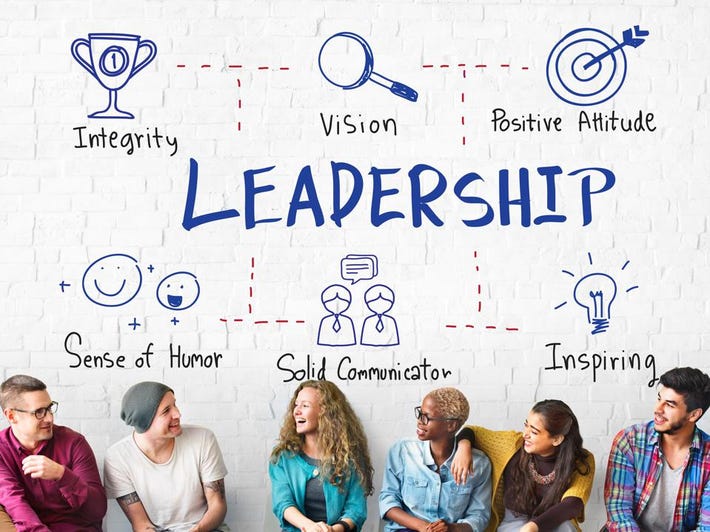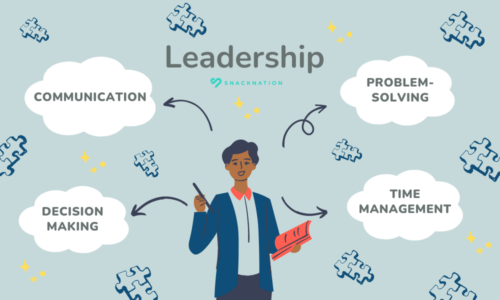Leadership qualities encompass a diverse set of attributes and skills that empower individuals to guide, inspire, and influence others effectively. A strong leader is not only proficient in decision-making and strategic thinking but also adept at communication, empathy, and collaboration. Leadership involves motivating teams, fostering a positive work environment, and demonstrating integrity and accountability.
Successful leaders possess the ability to adapt to challenges, inspire trust, and cultivate a shared vision among team members. Leadership is a dynamic and multifaceted trait that extends beyond traditional hierarchies, emphasizing the importance of influence, mentorship, and the continuous pursuit of personal and professional development. In essence, leadership qualities play a pivotal role in shaping individuals into effective and influential figures within various personal, professional, and community contexts.

Table of Contents
I. Introduction
A. Definition of Leadership Qualities
Leadership qualities refer to the distinctive set of characteristics, skills, and attributes that enable individuals to effectively guide, inspire, and influence others in a positive and impactful manner. These qualities encompass a diverse range of traits, including but not limited to effective communication, strategic thinking, emotional intelligence, integrity, adaptability, and the ability to foster collaboration.
A leader with strong leadership qualities not only excels in decision-making and problem-solving but also demonstrates empathy, resilience, and a commitment to the growth and success of those they lead. Leadership qualities are essential for individuals in various roles, whether in professional settings, community initiatives, or personal relationships, as they contribute to creating a positive and motivating environment while driving collective efforts toward shared goals.

B. Significance of Leadership qualities Skills Development
The significance of leadership qualities or skill development lies in its transformative impact on individuals and organizations. Cultivating effective leadership qualities or skills goes beyond traditional hierarchical roles; it empowers individuals to inspire and guide others toward shared objectives. One key aspect is the ability to communicate a compelling vision, fostering a sense of purpose and direction within a team or organization. Leadership qualities skills development also enhances decision-making capabilities, allowing leaders to navigate challenges with confidence and strategic acumen.
Moreover, strong leadership qualities or skills contribute to the creation of positive work environments. Leaders who prioritize empathy, active listening, and team collaboration foster a culture of trust and mutual support. This, in turn, enhances employee engagement, satisfaction, and overall productivity.
In today’s dynamic and evolving business landscape, adaptability is crucial. Leadership qualities or skills development equips individuals with the tools to navigate change effectively, promoting innovation and resilience. Additionally, leadership qualities development programs often emphasize continuous learning, encouraging leaders to stay abreast of industry trends and emerging practices.
At the organizational level, investing in leadership qualities or skills development reaps long-term benefits. It nurtures a pipeline of capable leaders, ensuring the sustainability and growth of the business. Effective leadership is integral to navigating complex challenges, fostering a culture of innovation, and achieving strategic goals.
II. Key Leadership Qualities
A. Vision and Strategic Thinking
Vision and strategic thinking are integral components of effective leadership qualities and organizational success. Vision entails a forward-looking perspective that articulates a desired future state for an individual, team, or organization. A visionary leader is adept at formulating a clear and inspiring vision, aligning it with core values, and communicating it effectively to stakeholders.
Strategic thinking complements vision by providing the framework for turning aspirations into reality. It involves the ability to analyze complex situations, anticipate future trends, and formulate well-informed plans. Strategic thinking allows leaders to set priorities, allocate resources efficiently, and navigate challenges with a long-term perspective.
Together, vision and strategic thinking create a roadmap for achieving goals and staying adaptable in a dynamic environment. A compelling vision serves as a guidepost, inspiring and aligning team members toward a shared purpose. Strategic thinking ensures that the steps taken are not only purposeful but also flexible enough to respond to changing circumstances.
In essence, vision without strategic thinking may remain an aspiration, while strategic thinking without vision risks lacking a clear direction. Combined, they empower leaders to guide their teams purposefully, make informed decisions, and navigate the complexities of today’s rapidly evolving landscape. The symbiotic relationship between vision and strategic thinking forms the foundation for successful leadership and organizational achievement.

B. Effective Communication
Effective communication is a cornerstone of successful interactions, both in personal and professional contexts. It involves the clear and articulate conveyance of ideas, thoughts, and information with the intention of being understood. In addition to conveying information, a skilled communicator makes sure the audience hears and understands what is being said.
Key elements of effective communication include clarity, simplicity, and relevance. A communicator strives to express complex ideas in a straightforward manner, using language and visuals appropriate for the audience. Active listening is equally important; understanding the perspectives and feedback of others fosters a collaborative and inclusive environment.
Non-verbal cues, such as body language and tone of voice, also play a crucial role in effective communication. These elements can enhance or detract from the message being conveyed. Tailoring the message to the needs of the audience, whether it’s a team, clients, or stakeholders, ensures that communication is meaningful and impactful.
Effective communication is not a one-way process; it encourages open dialogue, questions, and feedback. This creates an environment where ideas can be shared, concerns addressed, and collaboration flourishes. In professional settings, mastering the art of effective communication is essential for building strong relationships, resolving conflicts, and achieving organizational goals. Overall, effective communication is a skill that empowers individuals to convey their thoughts clearly, connect with others authentically, and contribute to the success of diverse interpersonal and professional interactions.
C. Decision-Making Abilities
Decision-making abilities are critical skills that individuals, leaders, and teams employ to navigate complex situations and choose courses of action. Effective decision-making involves a combination of analytical thinking, strategic planning, and consideration of potential outcomes. Decisive individuals weigh the available information, assess risks, and anticipate consequences before arriving at a well-informed decision.
Key elements of strong decision-making abilities include the capacity to make timely choices, even in high-pressure situations. This requires the ability to prioritize, manage uncertainties, and adapt to changing circumstances. Decisive leaders also embrace accountability for their decisions, taking ownership of both successes and setbacks.
Moreover, effective decision-making often involves a balance between intuition and data-driven analysis. While relying on experience and gut instincts, individuals with strong decision-making abilities also leverage available data and insights to enhance the quality of their choices.
In organizational settings, decision-making abilities contribute to effective leadership, problem-solving, and the achievement of strategic objectives. Leaders who can make sound decisions inspire confidence, foster a sense of direction, and contribute to overall team success. Continuous development of decision-making skills involves learning from experiences, seeking feedback, and refining one’s approach over time.
In summary, decision-making abilities encompass a multifaceted skill set, incorporating analytical thinking, adaptability, accountability, and a balance between intuition and data-driven insights. Cultivating strong decision-making capabilities is crucial for personal and professional success, empowering individuals to navigate challenges and contribute meaningfully to the achievement of goals.
D. Emotional Intelligence
Emotional intelligence (EI) is a crucial aspect of interpersonal skills that involves the ability to recognize, understand, and manage one’s own emotions while also being attuned to the emotions of others. It encompasses a range of qualities, such as self-awareness, empathy, interpersonal skills, and emotional regulation. Individuals with high emotional intelligence can navigate social complexities, build strong relationships, and make informed decisions by considering both their own and others’ emotional states.
Self-awareness is the foundation of emotional intelligence, involving a deep understanding of one’s emotions, strengths, and weaknesses. This self-awareness extends to emotional regulation, where individuals can effectively manage and control their emotions, preventing impulsive reactions.
Empathy, a key component of emotional intelligence, involves the ability to understand and share the feelings of others. This skill fosters strong interpersonal connections, as individuals with high EI can appreciate diverse perspectives, handle conflicts empathetically, and nurture positive relationships.
Effective communication is another aspect of emotional intelligence. Individuals who possess EI can express their emotions clearly and tactfully, avoiding misunderstandings and fostering open communication. Furthermore, they are skilled at recognizing and interpreting non-verbal cues, enhancing their understanding of others’ emotions.
In both personal and professional contexts, emotional intelligence plays a pivotal role in leadership, teamwork, and conflict resolution. Leaders with high EI can inspire and motivate their teams, while team members with strong emotional intelligence contribute to a positive and collaborative work environment.
Continuous development of emotional intelligence involves self-reflection, active listening, and a commitment to understanding and valuing the emotions of oneself and others. Overall, emotional intelligence is a valuable skill that enhances personal and professional relationships, contributing to overall success and well-being.
III. Leadership Skills Development
Leadership qualities or skills development is a proactive and ongoing process aimed at enhancing an individual’s ability to lead, inspire, and guide others effectively. This multifaceted endeavor involves acquiring and refining a diverse set of skills that are essential for successful leadership in various settings, be it professional, community-oriented, or personal.

Key components of leadership qualities or skills development include:
- Self-Awareness: Understanding one’s strengths, weaknesses, values, and leadership style lays the foundation for effective leadership.
- Communication Skills: Clear and articulate communication is crucial for conveying ideas, fostering collaboration, and maintaining a positive team environment.
- Emotional Intelligence: Recognizing and managing one’s emotions and understanding the emotions of others cultivates empathy, effective interpersonal relationships, and conflict resolution.
- Decision-Making Abilities: Developing the capacity to make informed and timely decisions, considering both short-term and long-term consequences, is vital for effective leadership qualities.
- Adaptability: In a dynamic environment, leaders must be adaptable, embracing change and guiding their teams through transitions.
- Strategic Thinking: The ability to envision long-term goals, formulate plans, and align actions with organizational objectives contributes to successful leadership qualities.
- Team Building: Cultivating a cohesive and motivated team involves understanding individual strengths, fostering collaboration, and encouraging a positive work culture.
- Conflict Resolution: Leaders should be adept at managing conflicts constructively, finding solutions, and maintaining a harmonious work environment.
- Empowering Others: Effective leaders empower team members by providing guidance, recognizing achievements, and creating opportunities for professional growth.
- Continuous Learning: Leadership qualities or skill development is a continual process that involves seeking feedback, staying informed about industry trends, and adapting to evolving leadership challenges.
Leadership qualities or skills development can be facilitated through various means, including formal training, mentorship, coaching, and experiential learning opportunities. It requires a commitment to self-improvement, a growth mindset, and a genuine desire to lead with purpose and impact. Ultimately, the development of leadership skills contributes not only to individual growth but also to the success and effectiveness of teams and organizations.
IV. Importance of Leadership qualities in the Workplace
Leadership qualities in the workplace holds paramount significance as it plays a pivotal role in shaping organizational culture, fostering employee engagement, and driving overall success. The importance of leadership manifests in several key aspects:
- Guidance and Direction: Effective leaders provide clear guidance and direction, ensuring that team members understand organizational goals and objectives. This clarity helps align individual efforts with broader strategic initiatives.
- Motivation and Inspiration: Leaders inspire and motivate their teams, creating a positive work environment. By fostering a sense of purpose and enthusiasm, leaders contribute to higher levels of employee engagement and commitment.
- Employee Development: Strong leaders prioritize the development of their team members. They identify and nurture individual strengths, provide constructive feedback, and create opportunities for professional growth, contributing to a skilled and motivated workforce.
- Conflict Resolution: Leadership involves adeptly managing conflicts and challenges within the workplace. Skilled leaders can navigate disputes, promote open communication, and find constructive solutions, fostering a harmonious work environment.
- Decision-Making: Leaders are entrusted with making strategic decisions that impact the organization. Sound decision-making, guided by a vision and strategic thinking, contributes to the achievement of goals and organizational success.
- Organizational Culture: Leaders play a key role in shaping and reinforcing the organizational culture. Through their behavior, values, and actions, leaders set the tone for the workplace, influencing how employees collaborate, innovate, and interact.
- Adaptability and Change Management: In dynamic business environments, effective leaders guide their teams through change. Their adaptability, resilience, and ability to communicate the rationale behind changes are crucial for organizational agility.
- Communication: Clear and transparent communication is a hallmark of effective leadership. Leaders who communicate openly and effectively foster trust, enhance team collaboration, and reduce uncertainty.
- Talent Retention: A positive leadership style contributes to employee satisfaction and retention. When employees feel valued, supported, and challenged, they are more likely to stay committed to the organization.
- Innovation and Creativity: Leaders who encourage a culture of innovation and creativity inspire their teams to think outside the box. This fosters a dynamic and forward-thinking workplace, essential for staying competitive.
In essence, leadership in the workplace is indispensable for creating a conducive and thriving organizational ecosystem. It influences the overall work atmosphere, employee satisfaction, and the ability of the organization to adapt and excel in an ever-evolving business landscape.
V. Leadership Styles
A. Transformational Leadership
Transformational leaders inspire change and innovation. They motivate their teams to surpass their own expectations and embrace new challenges.
B. Servant Leadership
Servant leaders prioritize the well-being of their team members. By serving others first, they foster a culture of empathy, collaboration, and mutual respect.
C. Situational Leadership
Effective leaders adapt their leadership style based on the specific situation. This flexibility ensures that leadership approaches align with the needs of the team and the goals at hand.
VI. Challenges in Leadership
A. Handling Change
Leaders must navigate and lead their teams through periods of change. Successful leaders communicate effectively, provide support, and guide teams during transitions.
B. Navigating Uncertainty
The ability to make informed decisions in uncertain situations is a critical leadership skill. Leaders who can instill confidence and clarity during uncertain times are invaluable.
C. Balancing Authority and Empowerment
Finding the right balance between providing guidance and empowering team members is a continual challenge for leaders. Striking this balance fosters a culture of autonomy and accountability.
VII. Leadership in the Digital Age
A. Adaptability to Technological Changes
Leaders must stay technologically savvy to lead their teams effectively in a rapidly evolving digital landscape. Embracing technological advancements enhances efficiency and innovation.
B. Remote Leadership and Collaboration Tools
The rise of remote work requires leaders to adapt to new collaboration tools and manage teams effectively across different geographical locations.
C. Leading Virtual Teams
Leadership in virtual environments demands strong communication skills, trust-building strategies, and the ability to foster a cohesive team culture despite physical distance.
VIII. Leadership Development Programs
A. Corporate Training Initiatives
Many organizations invest in leadership development programs to equip their leaders with the necessary skills. These programs often include workshops, seminars, and online courses.
B. Executive Coaching
Individualized coaching sessions with experienced professionals provide targeted guidance for leaders seeking to enhance specific aspects of their leadership style.
C. Leadership Retreats and Workshops
Retreats and workshops offer immersive experiences that facilitate team bonding, strategic planning, and personal reflection, contributing to holistic leadership development.
IX. Case Studies
A. Successful Leadership Stories
Explore real-world examples of leaders who have demonstrated exceptional qualities and skills, providing inspiration and insights for aspiring leaders.
B. Learning from Leadership Failures
Examining instances where leadership fell short provides valuable lessons on pitfalls to avoid and the importance of continuous improvement.
X. Personal Leadership Development Plan
A. Self-Assessment
Leaders should conduct regular self-assessments to identify strengths, weaknesses, and areas for improvement, creating a foundation for personalized development.
B. Goal Setting
Setting SMART (Specific, Measurable, Achievable, Relevant, Time-bound) goals ensures leaders have clear objectives to work towards.
C. Continuous Reflection and Adjustment
Regular reflection on leadership experiences, coupled with a willingness to adapt and adjust strategies, is essential for ongoing growth and development.
XI. Future Trends in Leadership
A. Emphasis on Diversity and Inclusion
The future of leadership will prioritize diversity and inclusion, recognizing the value of varied perspectives and backgrounds in decision-making.
B. Sustainable and Ethical Leadership Practices
Leadership will increasingly focus on sustainability and ethical practices, aligning business goals with social and environmental responsibility.
C. Technological Integration in Leadership Development
Advancements in technology, such as virtual reality and artificial intelligence, will play a significant role in enhancing leadership development programs.
Conclusion
In conclusion, leadership qualities are fundamental, and continuous development is essential for effective leadership. By fostering key qualities, embracing various leadership styles, and adapting to emerging trends, leaders can navigate challenges and inspire their teams towards success.
FAQs
- Can anyone become a leader with the right development? Yes, leadership is a learned skill, and with the right development, anyone can cultivate the qualities needed to become an effective leader.
- How can leaders balance authority and empowerment? Striking the right balance involves providing guidance while empowering team members to make decisions and take ownership of their work.
- Is emotional intelligence critical for all leaders? Yes, emotional intelligence is crucial for understanding and managing emotions, fostering positive relationships, and creating a healthy work environment.
- What are the key challenges in leading virtual teams? Challenges include effective communication, building trust remotely, and maintaining team cohesion despite physical separation.
- How can leaders stay relevant in the digital age? Staying relevant involves continuous learning, adapting to technological changes, and embracing digital tools for effective leadership.









